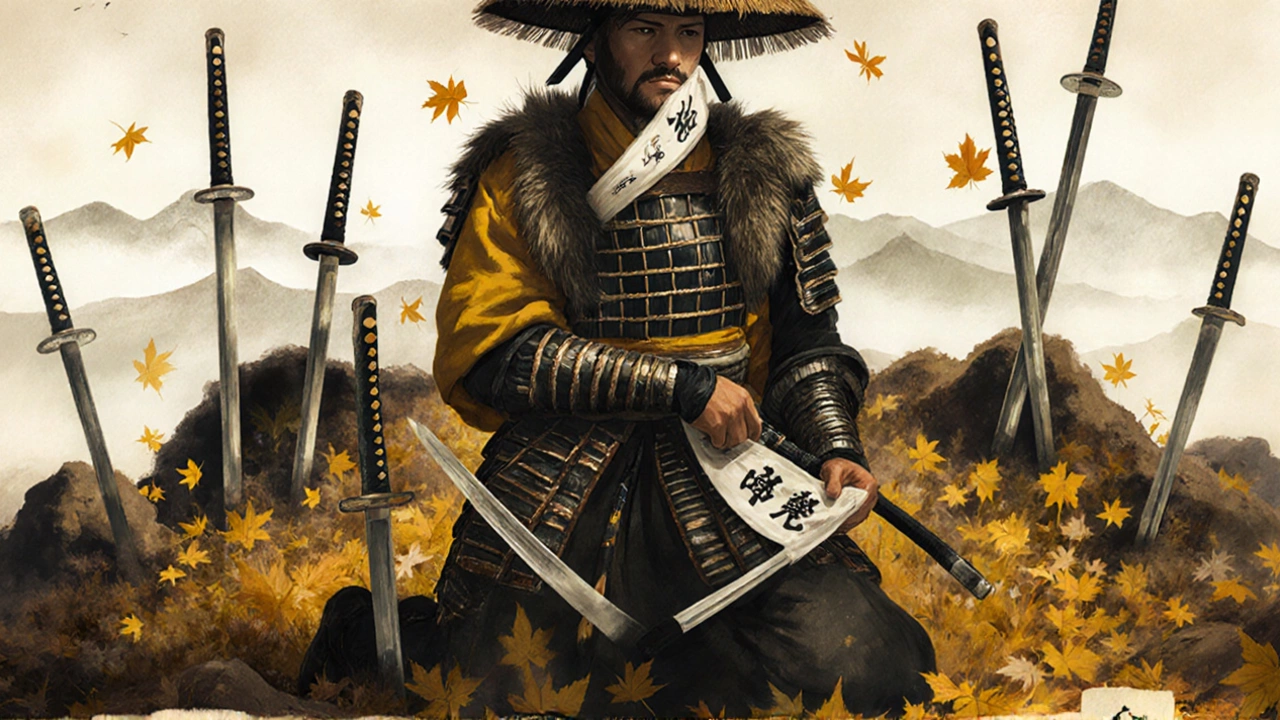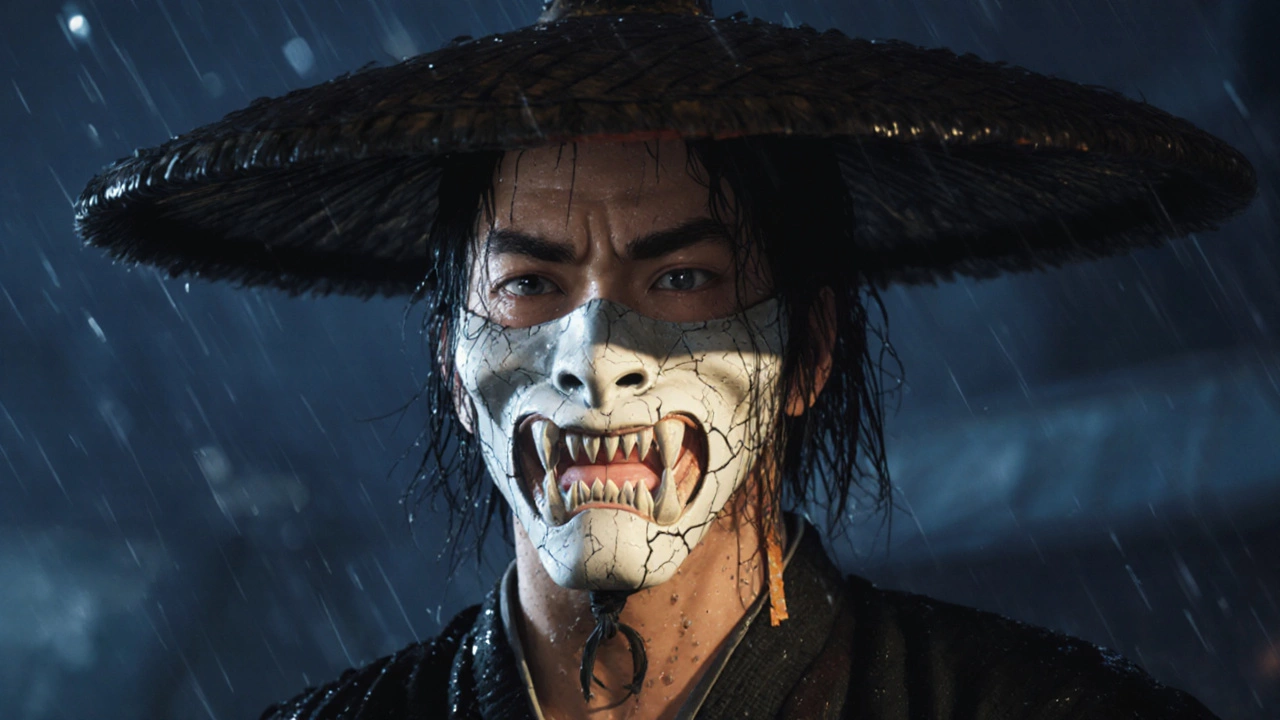When Sucker Punch first dropped Ghost of Tsushima in 2020, the world of feudal Japan suddenly felt like a playground for modern gamers. Five years later, the studio returns with Ghost of Yotei, a sequel that doesn’t just polish the old formula but rewrites big chunks of it. From how you travel the hills to the way a wolf might yank a sword from an enemy’s grip, the new title pushes the samurai experience into fresh, sometimes brutal, territory.
What’s new in Ghost of Yotei?
The most talked‑about change is the shift from adorable foxes to full‑grown wolves. In the original game, foxes were cute markers that helped you locate side quests and gear. Yotei’s wolves, however, are combat partners that can charge into a fight, latch onto foes, and even pull enemies away from you. Their AI feels surprisingly intuitive – they’ll flank a group of archers while you focus on a sword duel, or create a distraction that lets you line up a perfect bow shot. It’s a subtle but massive upgrade that makes the world feel like it’s actively aiding, not just observing, your actions.
Combat itself has been overhauled. The core “strike, parry, dodge” loop remains, but each move now carries more weight. Stamina drains differently depending on weapon weight, and there’s a new “focus” meter that builds as you land precise hits. When the meter fills, you can unleash a burst of speed or a devastating counter‑attack that turns the tide of battle. This adds a layer of tactical decision‑making; you’re no longer just mashing buttons but choosing when to be aggressive and when to wait for the perfect opening.
Progression has also gotten a makeover. Instead of a simple gear ladder, the game now ties character upgrades to narrative milestones. Completing a story mission unlocks a new skill tree branch, and each branch reflects a different samurai philosophy – honor, ruthlessness, or mysticism. This makes level‑up moments feel earned and story‑driven rather than a grind for better stats.
Exploration is where Yotei really shines. The studio has doubled down on its decision to ditch the cluttered minimap of Tsushima. Instead of icons and waypoints, you rely on natural landmarks, wind direction, and the wolves themselves, who occasionally howl to indicate points of interest. The world feels less like a checklist and more like a living landscape you’re pushed to read like a map.

Performance, visuals, and technical play
On PS5, Ghost of Yotei offers three distinct graphics modes, with a fourth unlocked for PS5 Pro owners. The default mode runs at native 4K and 30 fps, prioritising texture fidelity and lighting over raw smoothness. Ray tracing is optional in the higher‑performance mode, which drops resolution to 1440p but pushes the frame rate to 60 fps. Players can toggle between modes on the fly, letting you choose between buttery‑smooth combat or jaw‑dropping scenery.
The visual design pushes the samurai aesthetic to a new high. Sunlight filters through bamboo forests in a way that almost feels tangible, and rain slicks the armor with a sheen that reflects the world’s detail. The night‑time sequences use a deep blue palette that makes lanterns pop, while the mountain vistas retain a painterly quality reminiscent of classic Japanese prints.Behind the scenes, the game runs on a proprietary engine built by Sucker Punch, marking a rare departure from the industry‑standard Unreal Engine for a large open‑world title. This decision pays off in the way environmental effects interact with combat – for example, wind can affect arrow trajectory, and dense foliage can partially block enemy sightlines, adding subtle tactical depth.
Technical hiccups are few. A small number of players have reported occasional texture pop‑ins in distant horizons and a rare audio desync when switching from combat to cutscene. However, these issues are far outweighed by the overall polish, especially when compared to other recent open‑world releases that launched with far more severe bugs.
Beyond the core experience, the game includes a robust photo mode that feels like an after‑thought but works like a dedicated tool. You can adjust depth of field, play with exposure, and even apply filters that mimic traditional ink brush strokes. It’s a testament to how much the developers value the world’s aesthetic; screenshots you capture could easily pass for gallery‑worthy artwork.
In terms of narrative, Yotei threads a more personal story line through the larger conflict. The protagonist is torn between duty to his clan and a growing respect for the wolf pack that aids him, mirroring the game’s blend of human and animal partnership. Dialogue choices affect how the wolves respond, subtly impacting side‑quest outcomes and even some final story beats.
Overall, Ghost of Yotei stands as a bold example of how sequels can evolve. It respects the spirit of the original while daring to rewrite key systems. The addition of combat wolves, deeper skill trees, and a world that asks you to navigate without a cluttered map feels fresh. Coupled with stellar visuals and a flexible performance offering, the title positions itself as more than just a follow‑up – it’s a genuine contender for this year’s Game of the Year honors.
